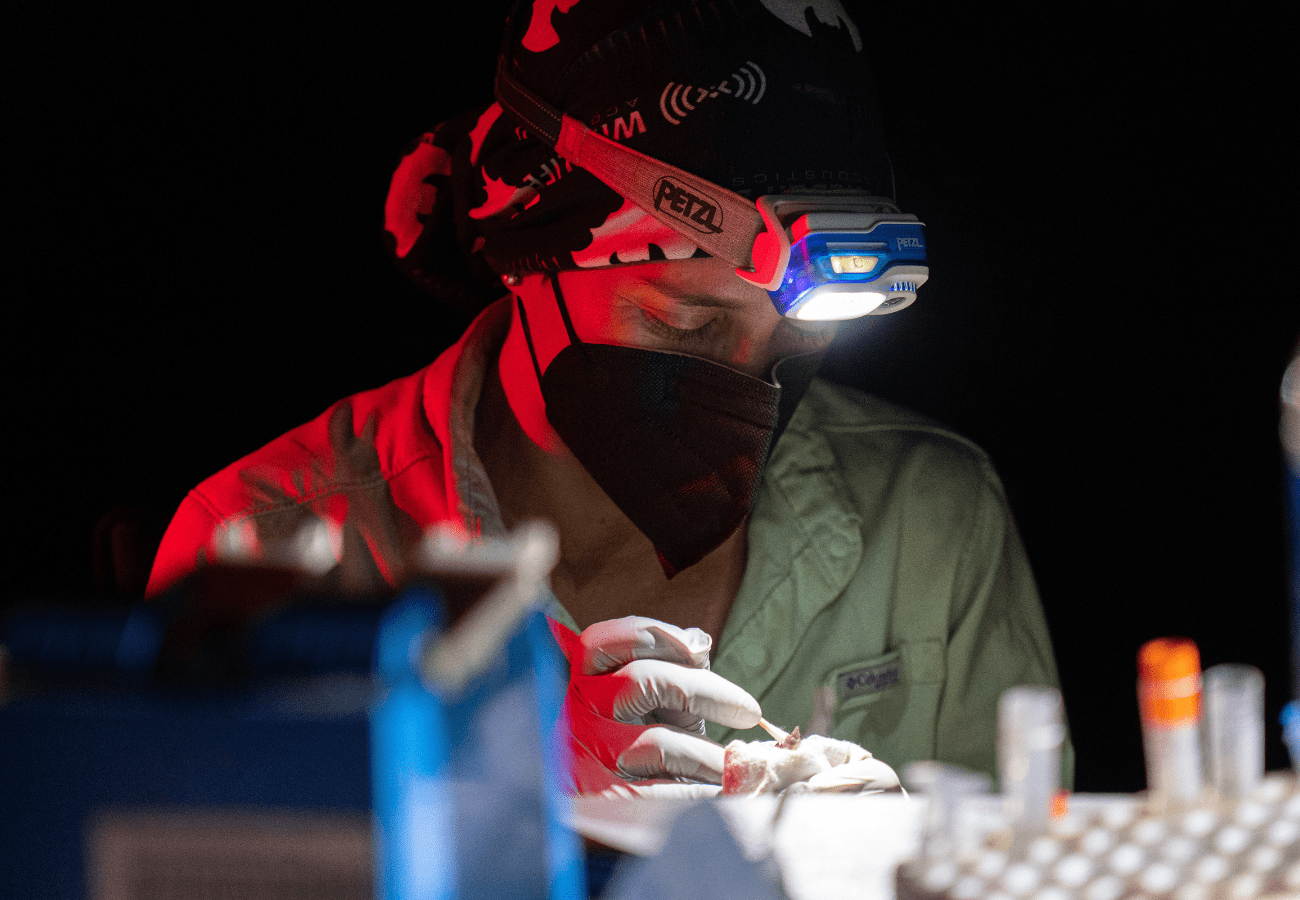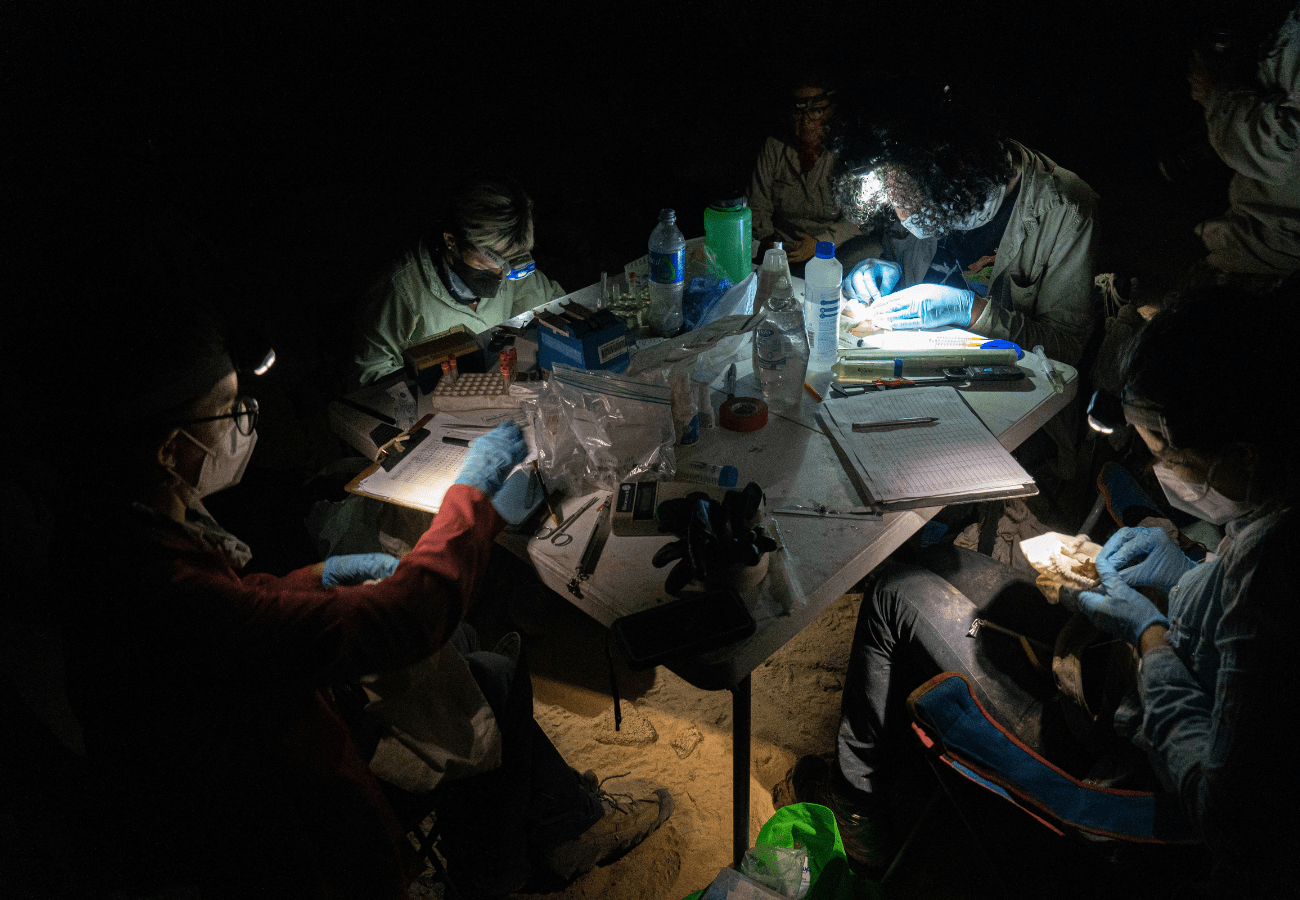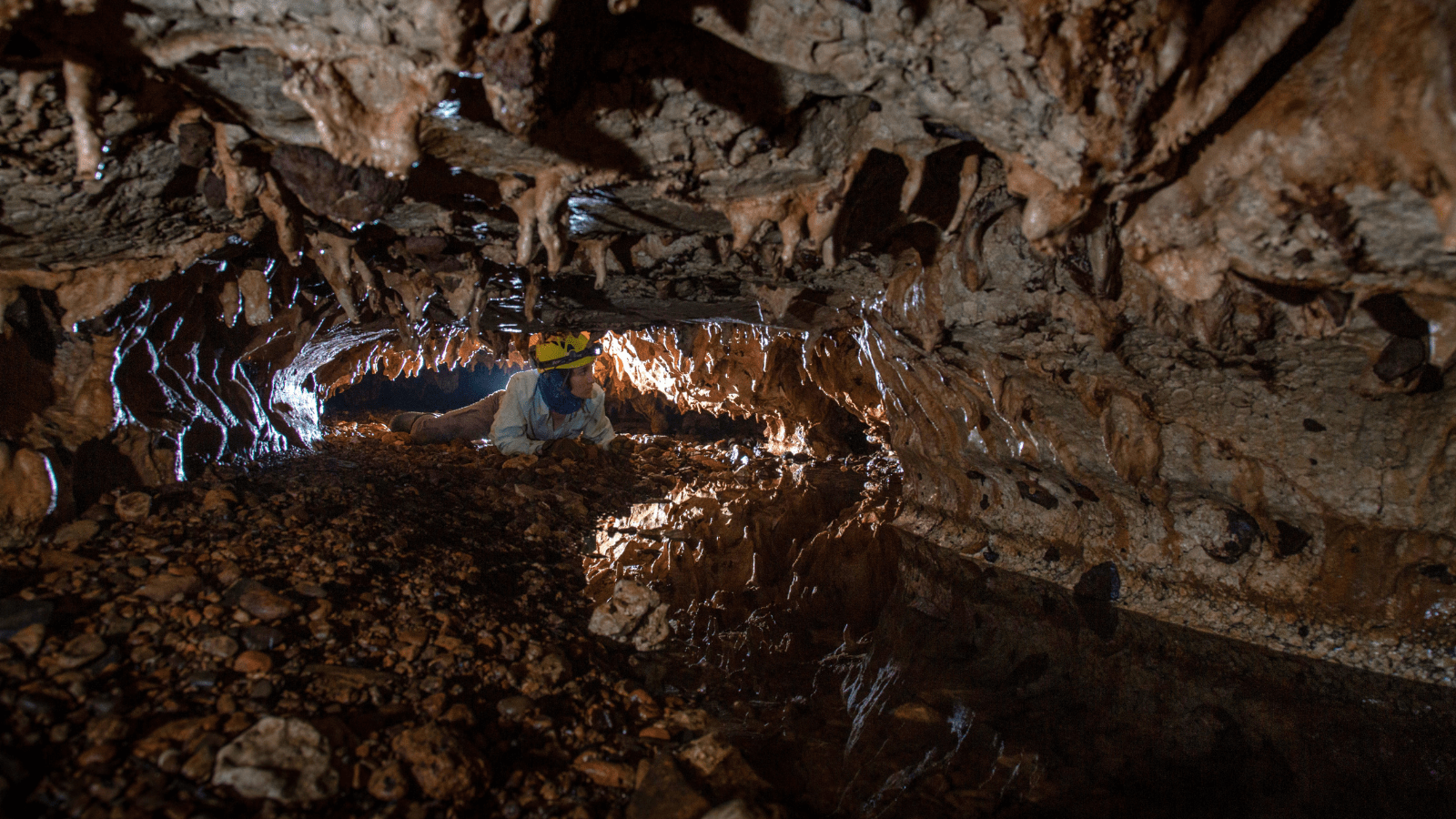Into the Dark: Exploring the Hidden World of Bat Migration
Myth-Busting & Ecosystem Benefits
Like misunderstood superheroes of the night, bats are not the villains they are often portrayed to be. The COVID-19 pandemic disrupted not only aspects of our global economy and public health systems, but also our holistic view of bats as well, establishing them as dangerous animals.
Even with this fortified stigma fueled in part by the COVID-19 pandemic, ecologists studying these winged-mammals know the importance of the essential positions that bats play in the health of our ecosystem.

As exemplified by the declining populations of keystone species such as honeybees and reef-building corals, the repercussions of population declines can trigger severe environmental consequences. One critical and often unnoticed job that bats employ is their ability to function as pollinators. Bats aid in the dispersal of seeds seen with frugivorous species as well as help control pest populations like mosquitoes. Despite their crucial roles, bats and their behaviors remain shrouded in mystery.
Particularly, bats’ migratory behavior remains largely unknown. They often go unnoticed as migratory creatures due in part to their nocturnal habits. But those living in temperate zones that are unable to hibernate must escape the dropping temperatures during winter months in search of more favorable weather.
At the forefront of bat research, Dr. Amanda Vicente-Santos and her dedicated research team have embarked on a mission to unravel the migratory world of bats and illuminate their pivotal ecological contributions. Yet, their path is riddled with challenges, including the scarcity of comprehensive research on these remarkable creatures. Dr. Vicente-Santos and her team not only aim to fill this knowledge gap but also passionately advocate for the preservation of bat populations.

Why Do We Know So Little?
Let us first put ourselves into Amanda’s shoes: imagine being in Bracken Cave, Texas, during the summer. You have estimated that there are close to 20 million Mexican free-tailed bats (Tadarida brasiliensis) – making this the greatest mammal aggregation in the world. How do they know to aggregate here? Why are they here? Most of them are females who were pregnant and now have pups, but this is not the only place with millions of female bats that have been reported to roost together. Similar reports exist in other areas of Texas, extending all the way up to Southern Oregon and even as far south in some northern parts of Mexico.

“It takes them over four hours to leave the cave every night; that is how massive it is. They must feed their pups, so they eat tons of insects every night. And not just any insect, but agricultural pests. Farmers do not know it, but their crops are safer when these bats are around, as they help reduce pesticide use and thus make our environment safer.” - Dr. Amanda Vicente-Santos
Unfortunately, numerous GPS and tracking technologies employed by ornithologists for bird research prove inadequate for studying bats. Questions persist, such as their migration patterns, the survival rates during these journeys, and whether they return or venture somewhere else next summer.
Addressing these uncertainties assumes paramount importance in safeguarding these species along their migratory pathways, especially when operating on vast national and international fronts. The preservation of migratory species, including Mexican free-tailed bat, is essential for establishing crucial connections between habitats that might otherwise remain isolated.
Knowing this, bat researchers remain committed to unearthing the complexities surrounding these creatures and work on ways to adapt already existing technologies for studying bats. One promising avenue for tracking the entry and exit from a cave is by affixing PIT tags to bats and placing antennas at entrances, allowing researchers to discern and monitor individual activities. Once they have embarked from the caves, other methods utilizing radio telemetry through Motus towers enable accurate tracking of bat movements across expansive distances.
The information collected from these tracking systems, coupled with the application of molecular techniques, serves as a powerful tool for unraveling the intricate web of bat migration patterns. This reveals the hidden pathways they follow, shedding light on the migratory behavior of bats and their conservation needs.

Migratory Bats in a Changing World
The realm of conservation introduces the additional complexities of climate change and anthropogenic factors such as the increased use of agricultural pesticides which could affect their health and the ability to cope with infections. As a result, the understanding of bat health, their immune system, and their susceptibility to pathogens along their migratory route is imperative to protecting the declining populations.

Ecological fieldwork involves dealing with unpredictable natural environments where little is within our control. Every data collection effort is like taking a snapshot of a moment, so researchers aim to gather as much information as possible. Since the bats that they study often weigh only 10-15 grams (equivalent to an empty soda can), the amount of sample they can collect is extremely limited to avoid lethal collection.
"Every field site presents different and unique challenges, but for researchers, there is nothing more valuable than samples, and their integrity must be protected at all costs.” - Dr. Vicente-Santos
While some samples require immediate flash freezing in liquid nitrogen, this may not be the most accessible option for field researchers. To take full advantage of these precious samples, they can be preserved at room temperature in stabilization solutions like DNA/RNA Shield without compromising genetic integrity. Dr. Vicente-Santos and her team often collect hundreds of samples, requiring high-throughput options for processing and extracting across several different sample types.
The Quick-DNA/RNA MagBead Kit offers a versatile and automatable solution for a wide range of biological sample types, enabling the screening of pathogens with the use of molecular techniques, to enhance our understanding of bat health and conservation needs all from a singular drop of blood.
These enigmatic creatures of the night remain a subject of fascination and importance in the world of ecology. With the ever-changing challenges of a warming planet, researchers and conservationists are working tirelessly to ensure the survival of these unsung heroes of the night. Shifting our perspective on bats allows us to truly appreciate their vital role in maintaining the delicate equilibrium of our natural world and only then can we see the continued health and vitality of our ecosystems for generations to come.

To learn more about how Zymo Research can support your work, connect with one of our scientists to receive sample-specific solutions for any downstream application.
Header credit: Ferdinand Salazar


